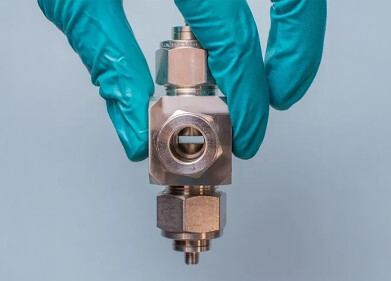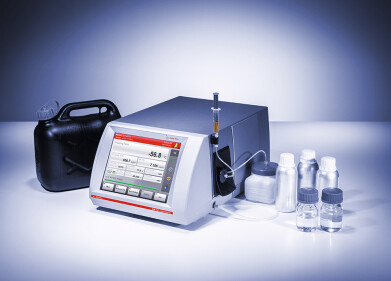Analytical Instrumentation
Meeting Tier 3 Requirements with Ease and Precision
Apr 05 2016
Now that the U.S. Environmental Protection Agency (EPA) has enacted a lower sulfur level requirement in gasoline (Tier 3), there is a renewed interest within the petroleum industry for measuring ultra-low level sulfur in fuels. The Tier 3 rule, part of a comprehensive approach to reducing the impacts of motor vehicles on air quality and public health, was signed last year with the expectation of a 2017 implementation. The new regulations will ratchet the level down from 30 ppm to 10 ppm for sulfur. While there is much debate about the cost and scope of the implementation, there is no doubt that refiners will need to adapt. These changes will require refiners to modify and install new infrastructure in their process units to meet this new specification. Out of the 108 refineries affected by the new ruling, only 40 currently meet it. The other 68 refineries will require upgrades that may take as long as two years to implement. Refiners that process sour, heavy crudes may face even greater compliance challenges. To help ease the burden, the EPA has offered some relief in the form of compliance suspensions for smaller refiners, credits for past performance, and averaging of sulfur content nationwide.
In order to make the transition as smooth as possible, it is critical to seek out the most efficient and precise technologies for measuring sulfur at these new ultra-low levels. XOS has been at the forefront of elemental analysis of petroleum products for well over a decade, supplying tools like the Sindie® Sulfur Analyzer to aid with the ultra-low-sulfur-diesel (ULSD) implementation in the early 2000s as well as the California Air Resources Board (CARB) requirements for gasoline.
Although X-ray fluorescence (XRF) technology has been a standard in the petroleum business for many years, the introduction of XOS-patented monochromatic wavelength dispersive X-ray fluorescence (MWD XRF) technology has surpassed the traditional limits of XRF sulfur analysis.
Over the years, XOS has further enhanced MWD XRF technology to the point of being able to measure down to 0.50 ppm quantitatively with a simple plug-and-go analysis system that can take measurements instantly with little-to-no sample preparation.
Reducing Compliance Costs Without Compromising Precision
While the technology of an analyzer engine drives performance, the acceptance of that technology via a standards method body is what dictates industry use. The Sindie Analyzer’s MWD XRF technology is a form of traditional WD XRF and offers compliance with major sulfur test methods such as ASTM D2622, ASTM D7039, and ISO 20884. There are several components that make up a standard, including the precision statement—a key component of the Tier 3 rule that focuses on repeatability and reproducibility. Repeatability (r) is typically the variation of measurements taken on one instrument of the same sample under the same operating conditions. Reproducibility (R) is the variation of running the same sample at different test sites using similar equipment.
ASTM D7039 is the sulfur method based on the MWD XRF technology. In 2013, a number of changes were adopted with a new version of the method. These changes include expanding the scope to include biodiesel, biodiesel blends, jet fuel, kerosene, and ethanol blends. The method also has an expanded range of sulfur concentration from 3.2 mg/kg up to 2822 mg/kg. The precision statement has been updated to include a repeatability (r) for all products of 0.4998 * X^0.54 and a reproducibility (R) for all products of 0.7384 * X^0.54. With acceptance in product specifications such as D4814 for gasoline and D975 for diesel, the D7039 method provides a great option for running sulfur in fuels.
The Sindie 2622 Analyzer offers compliance with both D2622 and D7039. The ASTM D2622 method is one of the original sulfur analysis methods via XRF. It contains a range of products from gasoline to jet fuel to crude oil. The range for D2622 is from 3mg/kg up to 4.6 wt. % total sulfur. Per the EPA, D2622 is currently the designated test method for measuring sulfur in gasoline and diesel fuel at the 500 ppm sulfur standard. Moving forward, D2622 is also one of the primary methods named by the EPA for the Tier 3 rule.
At the refinery, improved repeatability can have a major impact on the process. The ability to closely monitor and immediately identify process shifts of 1-2 ppm sulfur can result in extended catalyst life and reduced costs. In a pipeline application, MWD XRF technology also helps to ensure consistent, reproducible results as products pass from site to site. It is also critical at pipeline terminals to monitor interface cuts and tank contamination prevention. MWD XRF technology is available for process applications, allowing for constant process monitoring of sulfur levels in addition to validating them in the lab. The precision of the Sindie On-Line system, powered by MWD XRF, enables automation of the closed loop process control, which saves money and resources. The Sindie On-Line Analyzer uses a cutting edge dynamic window module to continuously monitor sample as it would flow through the process, providing quick, low maintenance analysis of many different types of petroleum products from crude oil to gasoline.
WD XRF is a long-standing proven technology, and the enhancements achieved through MWD XRF allow for the additional speed and precision necessary to meet increasingly stringent sulfur regulations, such as Tier 3.
Digital Edition
PIN 25.5 Oct/Nov 2024
November 2024
Analytical Instrumentation - Picturing Viscosity – How Can a Viscometer or a Rheometer Benefit You? - Sustainable Grease Formulations: Evaluating Key Performance Parameters and Testing Method...
View all digital editions
Events
Nov 26 2024 Paris, France
Nov 26 2024 Amsterdam, Netherlands
Nov 27 2024 Istanbul, Turkey
Biogas Convention & Trade Fair 2024
Nov 27 2024 Hanover, Germany
Dec 03 2024 Dusseldorf, Germany



















